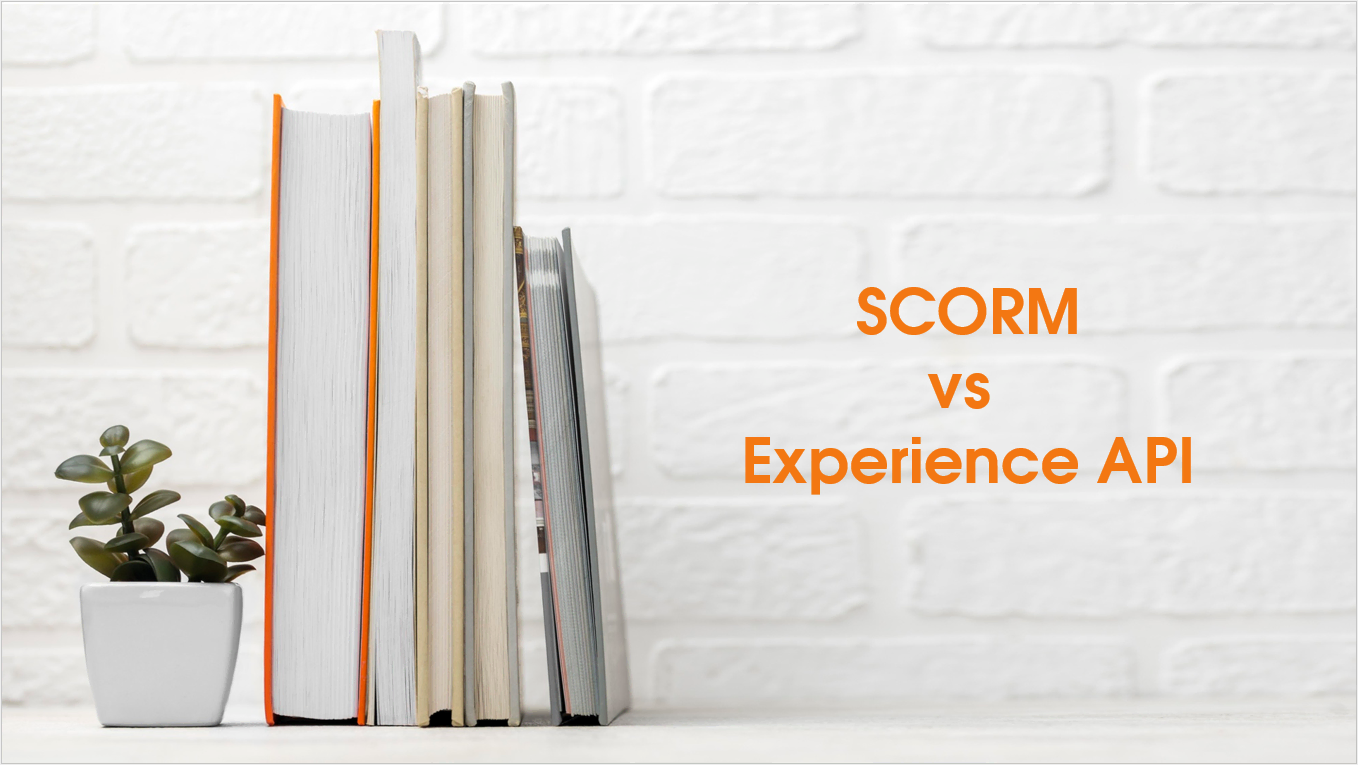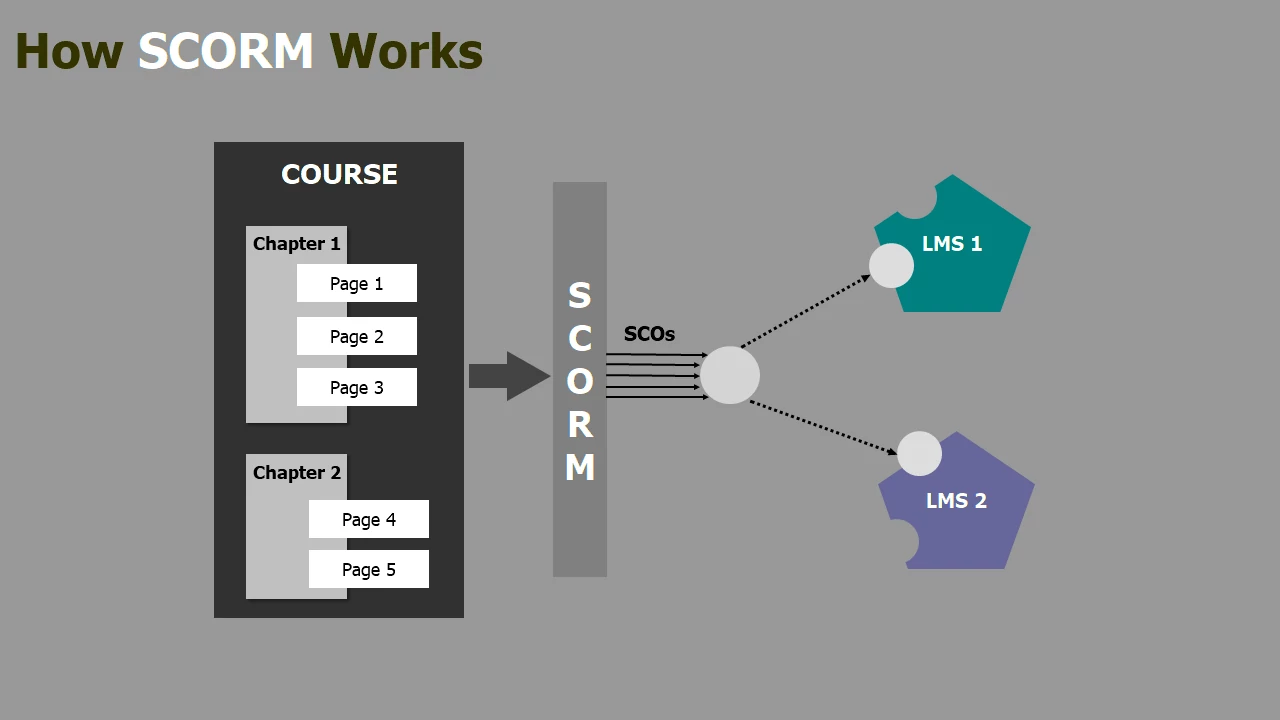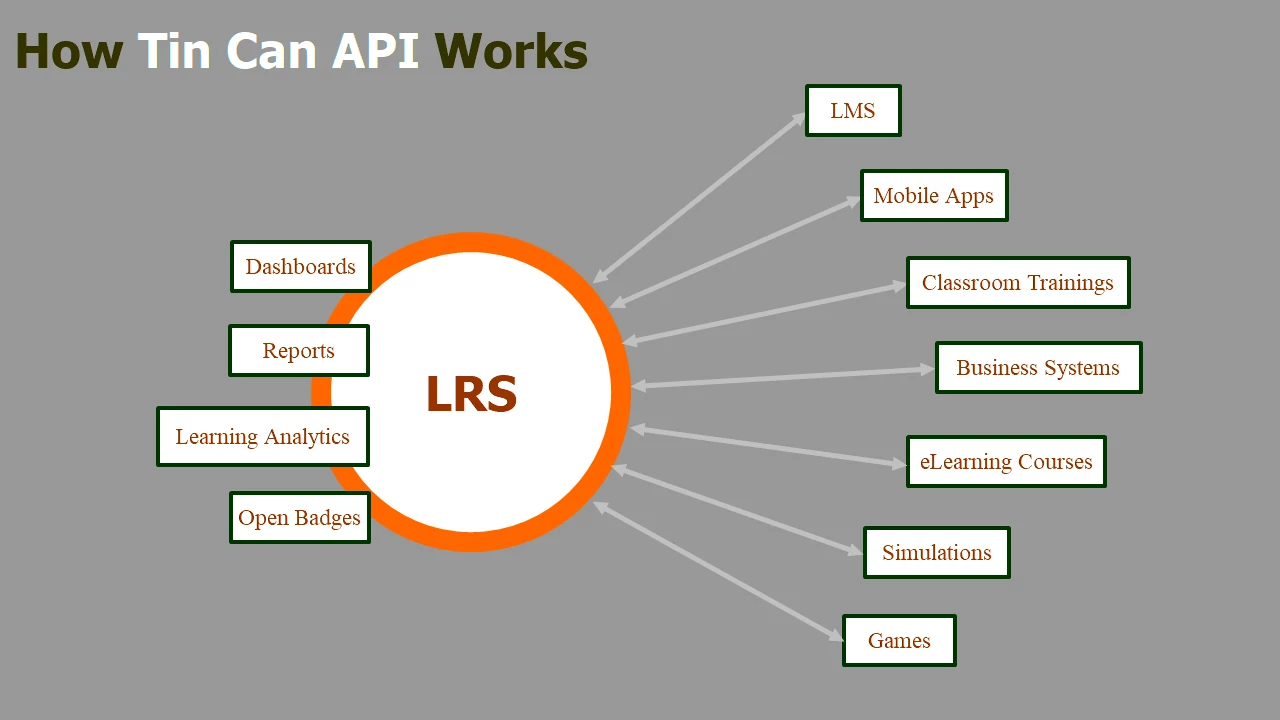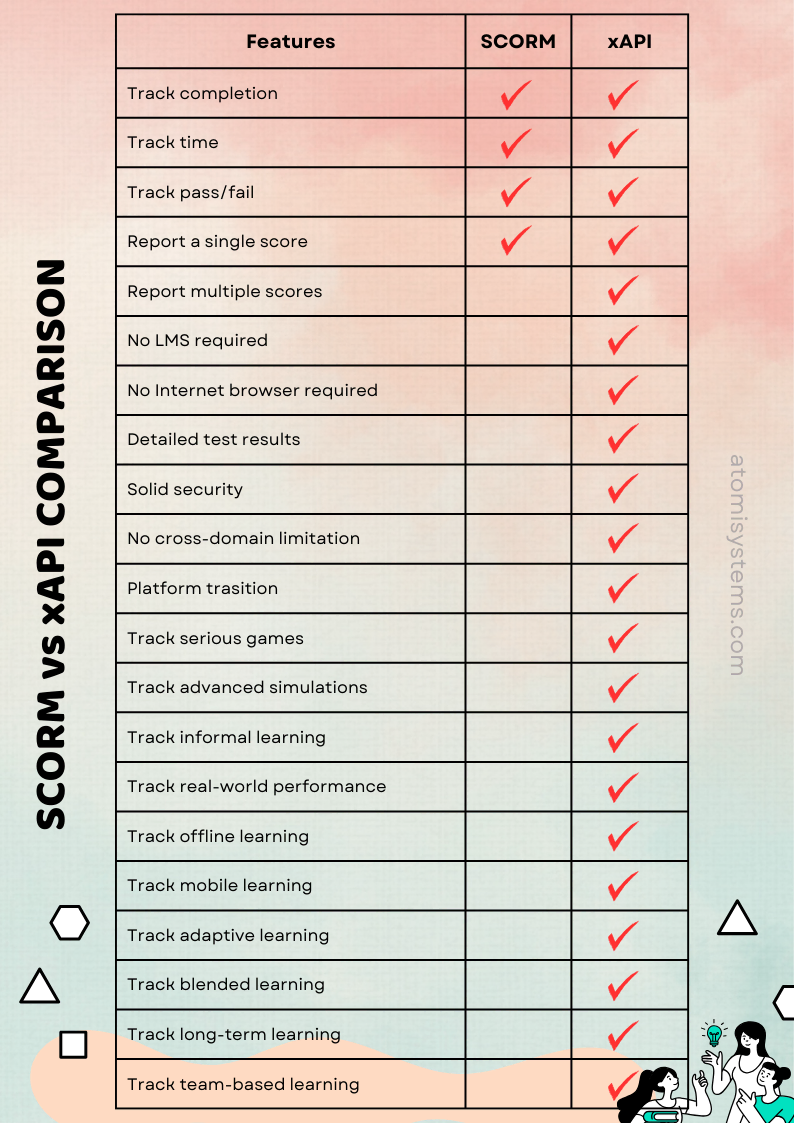In the fast-paced world of eLearning, selecting the right standard for creating, delivering, and tracking educational content can make or break your training program. There are two standards often at the center of this discussion, SCORM and Tin Can API (xAPI), both widely used yet frequently misunderstood, even by experienced educators. While SCORM excels at tracking online learning activities within a Learning Management System (LMS), such as the number of slides viewed or quiz questions answered correctly, xAPI takes flexibility to the next level by capturing both online and offline learning experiences, like reading a book chapter or engaging in a group discussion.
In this blog, we’ll comprehensively compare SCORM vs. xAPI, highlighting their key differences and unique strengths to help you choose the best fit for your eLearning needs. Additionally, we’ll introduce ActivePresenter, a powerful eLearning authoring tool that simplifies the creation of interactive courses and seamlessly exports content in both SCORM and xAPI formats, empowering you to craft engaging, trackable learning experiences with ease.

💡 As you may know, ActivePresenter is a powerful and versatile eLearning authoring tool designed for educators, trainers, and content creators.
This software enables users to easily create interactive courses, video tutorials, and quizzes with rich multimedia, built-in feedback options, screen recording, and video editing tools. Whether you’re designing SCORM/xAPI-compliant content or crafting engaging lessons from scratch, ActivePresenter combines simplicity with advanced features to streamline your workflow and boost learning outcomes.
Download ActivePresenter now to experience how amazing it is!

Table of contents:
- Basic information about SCORM
- Basic information about xAPI
- SCORM vs. xAPI: A Side-by-Side Comparison
- Which Standard Should You Choose?
- Export SCORM and xAPI Packages with ActivePresenter
1. What is SCORM?
SCORM stands for Shareable Content Object Reference Model. It is a product of the ADL Initiative, a research group sponsored by the United States Department of Defense. SCORM was designed to ensure that eLearning content is interoperable across different Learning Management Systems (LMSs). In essence, SCORM allows content creators to package eLearning materials in a standardized format, ensuring they can be easily imported, launched, and tracked within compliant LMS platforms.
SCORM operates by defining how content communicates with an LMS, primarily focusing on tracking learner progress, completion status, and quiz scores. Over the years, SCORM has evolved through several versions, with SCORM 1.2 and SCORM 2004 being the most widely adopted.

Key Features of SCORM
- Tracks learner progress, completion status, quiz scores, and time spent.
- Ensures reusable, portable content across SCORM-compliant platforms.
- Works well for linear, course-based eLearning modules.
Limitations of SCORM
- Struggles to capture complex learning interactions outside the LMS environment.
- Requires a continuous connection to an LMS, often restricting offline learning or mobile access.
- Limited tracking to basic metrics such as completion and scores.
2. What is Tin Can API (xAPI)?
Tin Can API or xAPI is the next generation of SCORM. xAPI adopted all key features of SCORM, plus some new features. For example, it can view in-depth assessment results, record any activities, and track diverse eLearning scenarios. Besides, unlike SCORM, xAPI doesn’t rely on any web browser, LMS, and Internet connection to work. Learners, therefore, have easy access to all kinds of materials anywhere and learn anytime they want.The “x” in xAPI is short for “experience”. This implies that xAPI’s advantages are far beyond what SCORM brings to you. Meanwhile, API stands for Application Programming Interface, a common method for software systems to interact and share data. At the simplest level, an xAPI activity statement tracks experiences in the “I did this” format (actor, verb, object). For example, “Jones did those tasks” or “Andy joined the party”. This format is also the core of any xAPI statement, making it easy to track any experience in any context.

If SCORM contents need an LMS to play, an LRS (Learning Record Store) is at the core of any xAPI ecosystem. The LRS will receive, store, and return data about learning experiences and performance. What’s more, you can also use your LRS to distribute data to other systems that support xAPI, like another LRS, an LMS, or a third-party reporting system. This feature is actually one of the most noticeable things that makes xAPI more advantageous than SCORM.
The current version of xAPI is 2.0, released on October 10, 2023
Key Features of xAPI:
- Captures both online and offline learning experiences.
- Works with or without an LMS by using a Learning Record Store (LRS).
- Supports advanced data collection like simulation results, social learning, performance support, mobile learning, and even real-world training activities.
- Uses a flexible “actor-verb-object” statement structure (e.g., “Jane completed module 3”).
Limitations:
- Still gaining traction in some LMS environments compared to SCORM.
- More complex implementation and technical knowledge are required.
3. What’s the Difference between SCORM and xAPI?
Some people often think about SCORM like a landline and xAPI like a smartphone. Using a landline, you only make phone calls. Meanwhile, a smartphone can transform the way you communicate with others and change your life. Besides calling, you can send messages, take photos, access the Internet, install new applications, share files, customize your phone, and so much more. xAPI now has started displacing SCORM, just as smartphones eventually overtook landlines. In other words, SCORM is just more basic compared to xAPI.
According to Experience API, there are many differences between these specifications as shown below.

Figure: Comparison between SCORM and xAPI (Source: Experience API)
Despite all distinctions above, the outcomes delivered by SCORM and xAPI are similar. That is, whichever specification you choose, your eLearning content won’t differ too much. Both allow learners to launch courses, complete them, answer quizzes, and pass tests.
4. SCORM and xAPI: Which One You Should Choose

Choosing between SCORM and xAPI depends on your organization’s goals, technical infrastructure, and learning objectives.
SCORM is enough if you want to:
- Create a large library of learning objects.
- Use an LMS to deliver and manage learning contents.
- Track a single learner.
- Use eLearning contents in other contexts.
- Track learner performance.
- Design eLearning contents that monitor the learners and adapt to their needs.
Otherwise, it’s better to pick xAPI if you want to:
- Track learners’ online and offline learning activities.
- Record experiences like mobile learning, serious games, simulations, informal learning, and real-world performance.
- Keep an eye on not only a single learner but also a group (group training).
- Track employees’ performance.
- Distribute statements to other systems.
- Bring learners a huge opportunity to learn everywhere and forever.
Note:
Although xAPI is powerful and amazing, it isn’t a perfect option. That is, xAPI doesn’t automatically create things like animations that work well on mobile devices. Thus, it can’t improve the appearance of content in a course as many eLearning designers mistakenly believe.
Also, note that SCORM and xAPI aren’t the only eLearning standards out there. Others like AICC HACP and IMS Common Cartridge also have their places in the eLearning industry.
Leveraging ActivePresenter for SCORM and xAPI Content Creation
Regardless of whether you choose SCORM or xAPI, creating high-quality eLearning content is the foundation of success. This is where ActivePresenter, a powerful authoring tool, comes into play. ActivePresenter simplifies the process of designing interactive, engaging courses and exporting them in both SCORM and xAPI formats, ensuring compatibility with your LMS or LRS.

Why Choose ActivePresenter?
- Versatile Content Creation: Design rich, interactive slides with animations, quizzes, and multimedia elements.
- Seamless Export Options: Export content as SCORM 1.2, SCORM 2004, or xAPI packages with just a few clicks.
- Interactive Features: Add quizzes, simulations, and branching scenarios to enhance learner engagement.
- Cross-Platform Compatibility: Create content that works flawlessly across desktops, tablets, and mobile devices.
- User-Friendly Interface: Intuitive tools make it easy for beginners and experts alike to produce professional-grade courses.
How to Export SCORM and xAPI Content with ActivePresenter
The infographic below shows the procedure to export your course to SCORM or xAPI packages:

- Create Your Course: Use ActivePresenter’s robust editing tools to design slides with multimedia, text, etc, to complete course content.
- Add Interactivity: Make the course engage by adding interactive elements, events-actions, variables, etc.
- Export to SCORM or xAPI: Access the Export tab > SCORM or xAPI > customize exporting parameters > export the course as a packaged file.
By leveraging ActivePresenter, you can streamline the creation process, ensure compliance with industry standards, and deliver impactful eLearning experiences tailored to your audience’s needs.
Key Takeaway
In summary, both SCORM and Tin Can API (xAPI) play vital roles in the eLearning ecosystem, each catering to different needs and use cases. SCORM offers a reliable, straightforward solution for traditional LMS-based training, while xAPI provides unmatched flexibility for modern, multi-platform learning experiences. By carefully evaluating your project requirements, you can choose the standard that best aligns with your goals.
To bring your eLearning vision to life, consider using ActivePresenter. With its intuitive interface and robust export options for both SCORM and xAPI, ActivePresenter empowers you to create engaging, standards-compliant content with ease. Ready to get started? Download the powerful eLearning authoring tool ActivePresenter today and take your eLearning projects to new heights!
